#dutch cartoonists
Explore tagged Tumblr posts
Text

source: @geritsel
Donald Trump by Siegfried Woldhek.
7 notes
·
View notes
Text
Handsome boys <3 (and Micah)

I love how you can tell how much I genuinely did not want to draw Micah LMFAOOO
#digital art#commisions open#procreate art#cartoonist#artist#fanart#rdr2 fanart#rdr2#rdr2 arthur#rdr2 dutch#rdr2 micah#red dead redemption 2#red dead redemption 2 fanart#sketches#sketch#doodles#rdr2 artwork#art#cowboys#save a horse ride a cowboy
26 notes
·
View notes
Photo
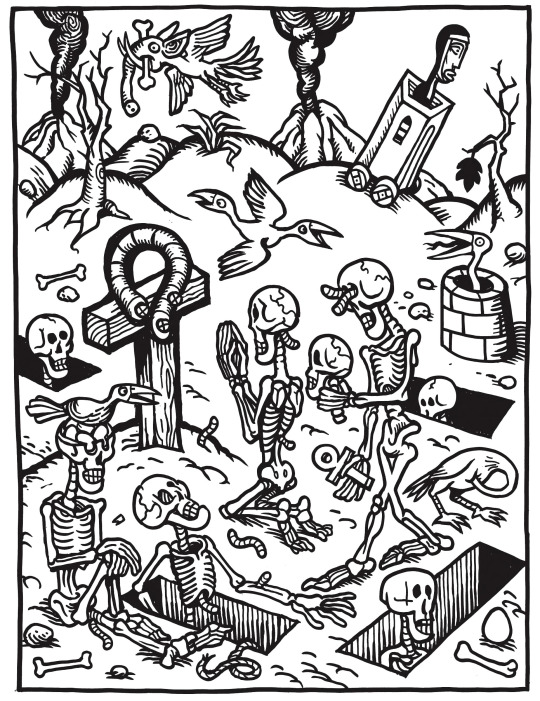
Marcel Ruijters, ''InguineMAH! 2008'' Source
#marcel ruijters#dutch artists#InguineMAH!#cartoonists#illustrations#death#skeletons#i don't know what else to add here
88 notes
·
View notes
Text
05/05/2024 is Dutch Heritage Day 🇨🇦, Liberation Day 🇩🇰, Mother's Day 🇭🇺, Cinco de Mayo 🌎, Orthodox Easter, World Laughter Day 🤣, International Dawn Chorus Day 🌎, Yom HaShoah 🇮🇱, National Cartoonists Day 🇺🇸, National Hoagie Day 🇺🇸, National Totally Chipotle Day 🇺🇸, National Astronaut Day 👩🚀👨🚀🇺🇸, National Infertility Survival Day 🇺🇸, Lemonade Day 🍋🇬🇧

#dutch heritage day#liberation day#mother's day#cinco de mayo#orthodox easter#world laughter day#international dawn chorus day#yom hashoah#national cartoonists day#national hoagie day#national totally chipotle day#national astronaut day#national infertility survival day#lemonade day
11 notes
·
View notes
Text


Before and after
#these are just sketches but i really like them…#ive been looking at the work of a dutch cartoonist and his stuff inspired me#and i wanted to show them having some casual intimacy 🥺#first one is uh. suggestive but oh well HFJSGFJD#tallosart#cinna#roscoe#roscinna#dragon age#lavellan#nsft
21 notes
·
View notes
Text

He Humbles - Ink on paper - 2023
#art#artists on tumblr#lowbrow#my art#cartoonist#lowbrowart#lowbrowillustration#cartoon art#art print#illustration#ink#paper#penguin#dutch#blot#splatter#cartoon#visual poetry#lars beelzebub
3 notes
·
View notes
Photo
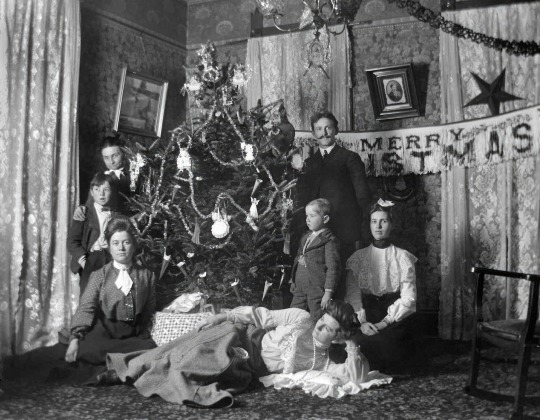
The history of Christmas traditions kept evolving throughout the 19th century, when most of the familiar components of the modern Christmas including St. Nicholas, Santa Claus, and Christmas trees, became popular. The changes in how Christmas was celebrated were so profound that it's safe to say someone alive in 1800 would not even recognize the Christmas celebrations held in 1900.
Washington Irving and St. Nicholas
Early Dutch settlers of New York considered St. Nicholas to be their patron saint and practiced a yearly ritual of hanging stockings to receive presents on St. Nicholas Eve, in early December. Washington Irving, in his fanciful History of New York, mentioned that St. Nicholas had a wagon he could ride “over the tops of trees” when he brought “his yearly presents to children.”
The Dutch word “Sinterklaas” for St. Nicholas evolved into the English “Santa Claus,” thanks in part to a New York City printer, William Gilley, who published an anonymous poem referring to “Santeclaus” in a children’s book in 1821. The poem was also the first mention of a character based on St. Nicholas having a sleigh, in this case, pulled by a single reindeer.
Clement Clarke Moore and The Night Before Christmas
Perhaps the best-known poem in the English language is “A Visit from St. Nicholas,” or as it’s often called, “The Night Before Christmas.” Its author, Clement Clarke Moore, a professor who owned an estate on the west side of Manhattan, would have been quite familiar with the St. Nicholas traditions followed in early 19th century New York. The poem was first published, anonymously, in a newspaper in Troy, New York, on December 23, 1823.
Reading the poem today, one might assume that Moore simply portrayed the common traditions. Yet he actually did something quite radical by changing some of the traditions while also describing features that were entirely new.
For instance, the St. Nicholas gift giving would have taken place on December 5, the eve of St. Nicholas Day. Moore moved the events he describes to Christmas Eve. He also came up with the concept of “St. Nick” having eight reindeer, each of them with a distinctive name.
Charles Dickens and A Christmas Carol
The other great work of Christmas literature from the 19th century is A Christmas Carol by Charles Dickens. In writing the tale of Ebenezer Scrooge, Dickens wanted to comment on greed in Victorian Britain. He also made Christmas a more prominent holiday and permanently associated himself with Christmas celebrations.
Dickens was inspired to write his classic story after speaking to working people in the industrial city of Manchester, England, in early October 1843. He wrote A Christmas Carol quickly, and when it appeared in bookstores the week before Christmas 1843 it began to sell very well.
The book crossed the Atlantic and began to sell in America in time for Christmas 1844, and became extremely popular. When Dickens made his second trip to America in 1867 crowds clamored to hear him read from A Christmas Carol. His tale of Scrooge and the true meaning of Christmas had become an American favorite. The story has never been out of print, and Scrooge is one of the best-known characters in literature.
Santa Claus Drawn by Thomas Nast
The famed American cartoonist Thomas Nast is generally credited as having invented the modern depiction of Santa Claus. Nast, who had worked as a magazine illustrator and created campaign posters for Abraham Lincoln in 1860, was hired by Harper��s Weekly in 1862. For the Christmas season, he was assigned to draw the magazine’s cover, and legend has it that Lincoln himself requested a depiction of Santa Claus visiting Union troops.
The resulting cover, from Harper’s Weekly dated January 3, 1863, was a hit. It shows Santa Claus on his sleigh, which has arrived at a U.S. Army camp festooned with a “Welcome Santa Claus” sign.
Santa’s suit features the stars and stripes of the American flag, and he’s distributing Christmas packages to the soldiers. One soldier is holding up a new pair of socks, which might be a boring present today, but would have been a highly prized item in the Army of the Potomac.
Beneath Nast's illustration was the caption, “Santa Claus In Camp.” Appearing not long after the carnage at Antietam and Fredericksburg, the magazine cover is an apparent attempt to boost morale in a dark time.
The Santa Claus illustrations proved so popular that Thomas Nast kept drawing them every year for decades. He is also credited with creating the notion that Santa lived at the North Pole and kept a workshop manned by elves. The figure of Santa Claus endured, with the version drawn by Nast becoming the accepted standard version of the character. By the early 20th century the Nast-inspired version of Santa became a very common figure in advertising.
Prince Albert and Queen Victoria Made Christmas Trees Fashionable
The tradition of the Christmas tree came from Germany, and there are accounts of early 19th century Christmas trees in America, but the custom wasn’t widespread outside German communities.
The Christmas tree first gained popularity in British and American society thanks to the husband of Queen Victoria, the German-born Prince Albert. He installed a decorated Christmas tree at Windsor Castle in 1841, and woodcut illustrations of the Royal Family’s tree appeared in London magazines in 1848. Those illustrations, published in America a year later, created the fashionable impression of the Christmas tree in upper-class homes.
By the late 1850s reports of Christmas trees were appearing in American newspapers. And in the years following the Civil War ordinary American households celebrated the season by decorating a Christmas tree.
The first electric Christmas tree lights appeared in the 1880s, thanks to an associate of Thomas Edison, but were too costly for most households. Most people in the 1800s lit their Christmas trees with small candles.
The First White House Christmas Tree
The first Christmas tree in the White House was displayed in 1889, during the presidency of Benjamin Harrison. The Harrison family, including his young grandchildren, decorated the tree with toy soldiers and glass ornaments for their small family gathering.
There are some reports of president Franklin Pierce displaying a Christmas tree in the early 1850s. But the stories of a Pierce tree are vague and there doesn't seem to be contemporaneous mentions in newspapers of the time.
Benjamin Harrison's Christmas cheer was closely documented in newspaper accounts. An article on the front page of the New York Times on Christmas Day 1889 detailed the lavish presents he was going to give his grandchildren. And though Harrison was generally regarded as a fairly serious person, he vigorously embraced the Christmas spirit.
Not all subsequent presidents continued the tradition of having a Christmas tree in the White House. By the middle of the 20th century, White House Christmas trees became established. And over the years it has evolved into an elaborate and very public production.
The first National Christmas Tree was placed on The Ellipse, an area just south of the White House, in 1923, and the lighting of it was presided over by President Calvin Coolidge. The lighting of the National Christmas Tree has become quite a large annual event, typically presided over by the current president and members of the First Family.
Yes, Virginia, There Is a Santa Claus
In 1897 an eight-year-old girl in New York City wrote to a newspaper, the New York Sun, asking if her friends, who doubted the existence of Santa Claus, were right. An editor at the newspaper, Francis Pharcellus Church, responded by publishing, on September 21, 1897, an unsigned editorial. The response to the little girl has become the most famous newspaper editorial ever printed.
The second paragraph is often quoted:
"Yes, VIRGINIA, there is a Santa Claus. He exists as certainly as love and generosity and devotion exist, and you know that they abound and give to your life its highest beauty and joy. Alas! how dreary would be the world if there were no Santa Claus. It would be as dreary as if there were no VIRGINIAS."
Church’s eloquent editorial asserting the existence of Santa Claus seemed a fitting conclusion to a century that began with modest observances of St. Nicholas and ended with the foundations of the modern Christmas season firmly intact.
By the end of the 19th century, the essential components of a modern Christmas, from Santa to the story of Scrooge to strings of electric lights were firmly established in America.
Source
192 notes
·
View notes
Text
⚠️BEWARE: ZOUTIG/SALTY PUPPY⚠️
TW: GROOMING, CSA, PEDOPHILIA, NECROPHILIA, BESTIALITY, LOLICON, HARASSMENT
Viewer discretion is advised. DO NOT harass this person, please.
If you’ve been in the Cyborg 009, Tezuka, or Showa era anime community, it’s inevitable that you’ve encountered Zoutig(he/they)- even if you didn’t realize it. They own the majority of Cyborg-009 related fan blogs on Tumblr and a discord server. This is a problem because they are the most active member of an extremely small fanbase, making others that want to participate in enjoying Cyborg 009 inevitably interact with them without knowing, and it can also make people that know about their behavior avoid the fandom entirely just because of them. They do not explicitly state who they are on most of their accounts and many have interacted with them by accident. This can also risk putting others in danger of being accused of being friends with a bad person.
The purpose of this document is not to send harassment or threats their way, or even to deplatform them- but to bring awareness to their behavior which includes underage NSFW art, harassment, and grooming. This is not a doxx and we do not hope to find anything about who Zoutig really is, and neither should you. Everything is publicly available information. If you have had a bad experience with Zoutig, please DM us and we will update our document.

Zoutig, also known as Salty Puppy, Salty pupcake, or Prince Sorao, is an artist that focuses on showa-era anime and manga (showa meaning japanese cultural goods from the 50’s-80’s mostly). They are a shotacon, babycon, and toddlercon* and identify as a proshipper*. They particularly focus on the Cyborg 009 ship “47” (ship between Albert Heinrich [004] and Great Britain[007]) , which isn’t inherently strange, but they prefer using 007’s child design in their ship art. They can usually be easily recognized from their art style, obsession with Cyborg 009 and Fujio Akatsuka, and they occasionally speak in the Dutch language.

Before we dive into their history, we will list all the accounts they own so you can block them. We will NOT link their nsfw accounts, since we do not want to distribute possibly illegal material (although it is not real CSAM).
*Shotacon - male equivalent to Lolicon, attraction to young boys. Babycon and toddlercon - pretty self explanatory.
*proshipper is usually vaguely defined as someone that people shouldn’t be harassed for what ships they like in fandoms, however it usually means someone that thinks any form of ships or nsfw content is okay including content that sexualizes minors or incestuous or abusive ships in a (usually) fictional setting. Not all proshippers are the same or agree on the last part, but the majority do.
Accounts
Tumblrs
Main: Salty Puppy https://www.tumblr.com/salty-puppy
Personal: Salty Pupcake https://www.tumblr.com/salty-pupcake
70s-cyborg-009-caps: https://www.tumblr.com/70s-cyborg-009-caps
2001-cyborg-009-caps: https://www.tumblr.com/2001-cyborg-009-caps/
Just-cyborg-009-screencaps: https://www.tumblr.com/just-cyborg-009-screencaps/
The-wunderkind-cyborg: https://www.tumblr.com/the-wunderkind-cyborg
Twitters:
Personal: Saltypupcake https://x.com/saltypupcake
Art: ZoutigeKunsten https://x.com/ZoutigeKunsten
Old username (deleted): Prince_Sorao https://x.com/Prince_Sorao
Old art username (deleted): SoraoDoesArt https://twitter.com/SoraodoesArt
Deviantart:
Prince-Sorao (old url) / Salty-Pupcake https://www.deviantart.com/salty-pupcake
Instagram:
Prince Sorao (inactive) https://www.instagram.com/prince.sorao/
Pixiv
Zoutig (ID:29912163) https://www.pixiv.net/en/users/29912163
(there is also a possible old Pixiv account besides the nsfw one mentioned later that is now inactive that I can’t find anymore. It’s pretty obvious to spot their art style so you’ll know when you see it.)
Colors Live
(no clue what this is, a drawing app i think?)
Anilist
Teirlist
Retrospring
(not linking as it could lead to harassment via anon asks.)
Discord Server

(no link provided for obvious reasons, just be sure not to join this and leave if you're in it)
To read the rest of this document, please click the link that goes to the full Google Doc. It goes into NSFW territory and grooming accusations, but nothing explicit is shown, viewer discretion is advised.
Full Document
#cyborg 009#cyborg009#osamu tezuka#tezuka star system#callout post#shotaro ishinomori#fujio akatsuka#60's anime#grooming#groomer#creep
69 notes
·
View notes
Text

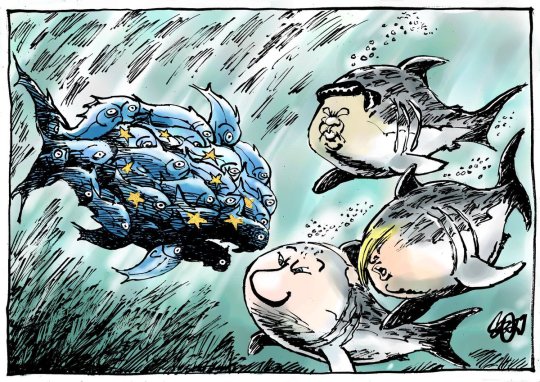

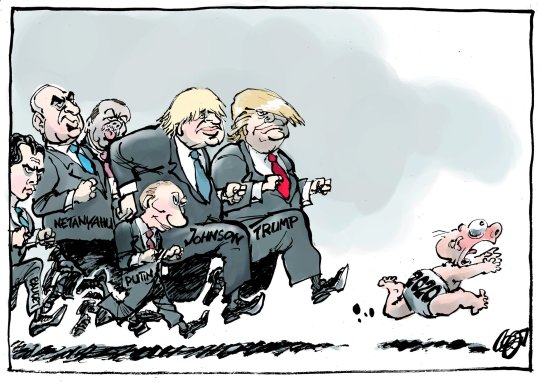
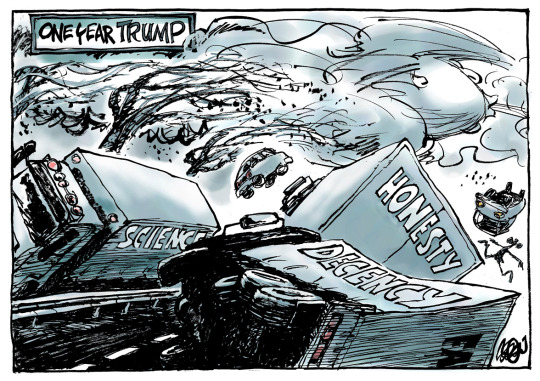
Dutch cartoonist Jos Collignon is fired by De Volkskrant after 44 years of being one of the the very best political draughtsman in the Netherlands. We are going to miss him.
29 notes
·
View notes
Text

If you are italian or in Italy at the moment I suggest you to buy this issue of Zio Paperone (Uncle Scrooge).
(I don't know why I'm typing in english when I have established that I'm talking to italians, but anyway...)
The stories published are as it follows. Recently ancillary titles are publishing more foreign comics, so the issue starts with a dutch two-parter:


Then a couple of stories which are absolute bangers (the first one is one the reasons why I think that if Don Rosa stories had been drawn by Guerrini, we would have had a superior $aga: he shares much of Rosa's barksian influence, but he's a more skilled cartoonist):


Then a couple of examples of the new-business-to-exploit genre:


And the introduction of Lord Hatequack:

13 notes
·
View notes
Text
Birthdays 8.30
Beer Birthdays
Samuel Whitbread (1720)
Johan Van Dyck (1975)
Stacy Marie Fuson; St. Pauli Girl 2005 (1978)
Five Favorite Birthdays
Lewis Black; comedian (1948)
Molly Ivins; writer (1944)
Fred MacMurray; actor (1908)
John Swigert Jr.; astronaut (1931)
Ted Williams; Boston Red Sox LF (1918)
Famous Birthdays
Elizabeth Ashley; actor (1939)
Geoffrey Beene; fashion designer (1927)
Joan Blondell; actor (1909)
Shirley Booth; actor (1898)
Timothy Bottoms; actor (1951)
Warren Buffett; gazillionaire (1930)
Michael Chiklis; actor (1963)
Robert Crumb; cartoonist (1943)
Jacques-Louis David; French artist (1748)
Agoston Haraszthy de Mokcsa; vineyard importer (1812)
Cameron Diaz; actor (1972)
John Gunther; writer (1901)
Jean-Claude Killy; French skier (1943)
Peggy Lipton; actor (1947)
Huey Long; politician (1893)
Raymond Massey; actor (1896)
Tug McGraw; NY Mets/Philadelphia Phillies P (1944)
John Phillips; singer, songwriter (1935)
Andy Roddick; tennis player (1982)
Ernest Lord Rutherford; New Zealand physicist (1871)
Theodor Svedberg; Swedish chemist (1884)
Frederique van der Wal (1967)
Jacobus Henricus van 't Hoff; Dutch physicist (1852)
J. Alden Weir; artist (1852)
Kitty Wells; country singer (1919)
Mary Wollstonecraft Shelley; English writer (1797)
3 notes
·
View notes
Text







Black Cat Cigarettes, Propaganda card titled' by Louis Raemaekers (1869-1956) a Dutch painter and editorial cartoonist. Dated 20th Century. (Photo by: Universal History Archive/ Universal Images Group via Getty Images)
#vintage#playing cards#cigarette#cigarette cards#tobacco#1800s#1900s#20s#30#40s#50s#history#historical art#art#propaganda#vintage advertising#vintage ads
4 notes
·
View notes
Text
O5/05/2023 is Dutch Heritage Day 🇨🇦, Liberation Day 🇩🇰, Cinco de Mayo 🌎, National Cartoonists Day 🇺🇲, National Hoagie Day 🇺🇲, National Totally Chipotle Day 🇺🇲, National Space Day 🌌🇺🇲, National Astronaut Day 👩🚀👨🚀🇺🇲

#dutch heritage day#liberation day#cinco de mayo#national cartoonists day#national hoagie day#national totally chipotle day#national space day#national astronaut day
0 notes
Text
Week 1: Secondary Research & my Idea.
These are some of the different artists I was looking at during the week.

This is Stuart Blackton, the first person to use pixilation and the creator of the "the enchanted mirror". He would "interact" with the drawing, even "removing" parts of the drawing and making them "reappear" as real objects, and would make the face "react". He would stop the recording, make his changes, and continue as before.
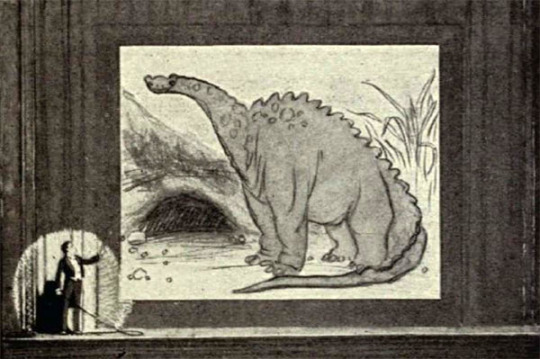
This here is Windsor McCay, american cartoonist who created "Gertie the dinosaur", the earliest cartoon to ever feature a dinosaur. This was also the first film to ever use Keyframes, Registration marks, Tracing paper, Animation loops, and Mutoscope action viewer. He would similarly interact with the animation, "throwing" an apple onto the screen and pocketing it when no one looked while an "apple" would appear on the screen, or he would walk behind the stage and "reappear" on screen and ride Gertie.
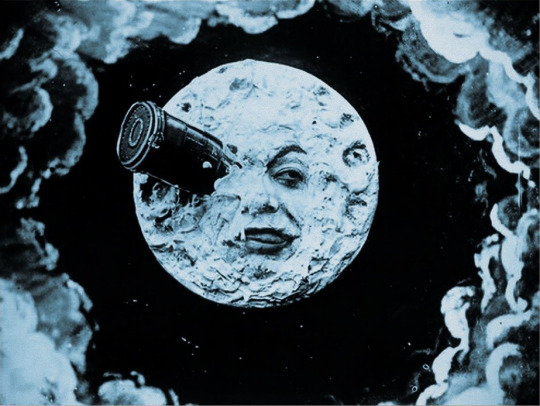
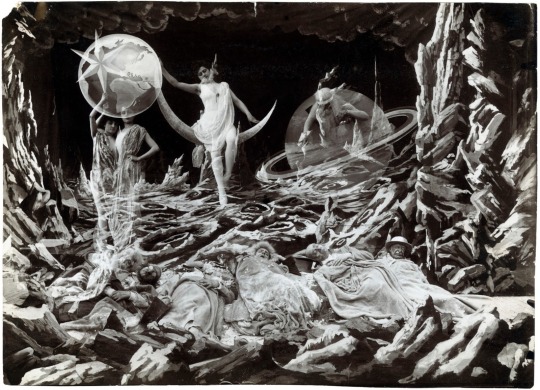
Georges meileis "trip to the moon (1902)", the first film to use Double exposure, Stop motion, and Slow motion. He was a illusionist film maker and a magician. The film took 3 months to make and was filmed in a greenhouse like building to get as much light as possible.
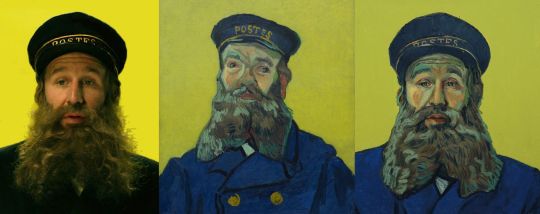
"Loving Vincent" directed by Dorota Kobiela and Hugh Welchman, the worlds first fully painted film with over 65,000 frames. The they would record the actors dressed as their characters , and would use a projector to project the frames from the video onto the canvases and the animators would paint each frame in Van Gogh's art style.
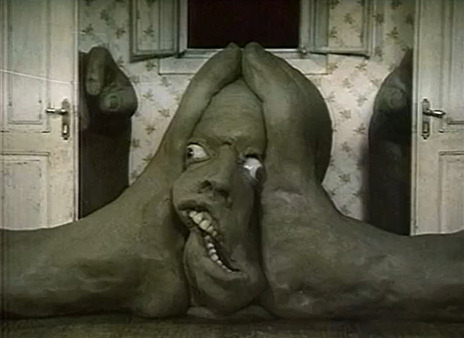
I briefly looked at Jan Svankmajers "Darkness light Darkness", its a very peculiar piece of media, and it is a 7 minute clay stop motion animation. Its just a body reconstructing itself in a miniature house and figuring out where everything goes.
How does this relate to my project?
Well my idea is to create a mixed media short film based in a haunted art gallery/museum ( some place with a lot of artwork) with a security guard monitoring the building and the strange occurrences within its walls. The main focus will be the different security cameras, which will be changing perspectives a lot, and even the p.o.v of the guard. The centerpiece will be an an animation of a portrait crawling out of the frame, but the first part of the animation will be painted like in "Loving Vincent", but as the creature begins to leave the frame it transforms into stop motion animation with clay. I was thinking that since the creature is made of paint it would make a wet sound when it moves, which is where I want to incorporate foley sound, and leave traces of itself around the building. In the background I want to create other spooky visuals like other paintings distorting or objects from paintings disapearing and showing up in the wrong places like in "The enchanted mirror". I want to experiment with different Camera trick to create different visuals and create suspense like the dutch tilt. I want to slowly unnerve the viewer, using different visual affects and changes in each camera.
There's a lot of work to be done and I'm looking forward to see how I'll incorporate the different workshops into it too
7 notes
·
View notes
Text

It’s bloody Sunday. Hewwo everyone and thank you @you-remind-me-of-the-babe, @thnxforknowingme, @martsonmars and @larkral for the tags, hi back @cutestkilla and yes @caramelcoffeeaddict I am indeed tagging you!
To no one’s surprise, I have written nothing apart from my thesis. On Thursday I basically went “into the zone” (my teacher would apply the flow theory here) and I wrote for 3.5 hours and ever since Thursday I have been adding stuff, but it is mostly done. Mostly. I only need to do the more general theory on representation, but since it isn’t specifically queer, I care less lol. Basically right now my theoretical background is “Representation” (basic stuff), “Queer representation” (the consequences of queer rep, the history of queer rep, gay assimilation vs. queer liberation, queerbaiting, heteroflexibility, Bury Your Gays, intersectionality) and lastly “the queer gaze” (queer reading of texts, positive queercoding, queer female fandom).
But uhm, I am actually super duper proud of my work, so ¯\_(ツ)_/¯ have some stuff about why there might be more queer men in media than queer women:
First, gender is generally still portrayed in a skewed way: there are more men in the media than women (Daalmans et al., 2017; Gallagher, 2014). Second, intimate relationships between two female characters are more often seen as something platonic (Russo, 2014). As an extension of this, women who sometimes enter into relationships with other women are not portrayed as queer, but as heteroflexible (Annati & Ramsey, 2022; DeCeuninck & Dhoest, 2016; Diamond, 2005; Jackson & Gilbertson, 2009). This means that relationships between two women are portrayed as a joke, a phase, a party trick, or as a way to attract male viewers (Diamond, 2005). This heteroflexible portrayal is not necessarily a bad thing, as it can also promote the beginning of a discovery of a queer identity (Symes, 2017), but most often a heteroflexible storyline ends with a woman being affirmed that she is straight and therefore she is not a threat to the heterosexual order (Jackson & Gilbertson, 2009). This is also consistent with the 1990s “lesbian chic” movement, in which sexual relations between straight women were presented as a fun, provocative trend (Dow, 2001; McNicholas Smith, 2020).
These are actually six sentences. Original is under the cut.
Will y’all ever be able to read this? Who knows. People, both online and offline, have expressed interest, which delights me. There is a thesis repository at my university, but a) my thesis is unfortunately in Dutch and b) I am using a copyrighted cartoon. I actually have permission to use it from the cartoonist (fuck yeah), but I obviously only asked permission for the use within my faculty so I’ll have to e-mail her again.
And now, the weather: @quizasvivamos @blurglesmurfklaine @coffeegleek @esperantoauthor @otherworldsivelivedin @sillyunicorn @bazzybelle @dragoneggos @raenestee @tectonicduck @nightimedreamersworld @urban-sith @captain-aralias @takitalks @justgleekout @cerriddwenluna @tea-brigade @ivelovedhimthroughworse @moodandmist @whogaveyoupermission @bookish-bogwitch @confused-bi-queer @aroace-genderfluid-sheep @ionlydrinkhotwater @1908jmd @special-bc-ur-part-of-it @chen-chen-chen-again-chen @nausikaaa/@wellbelesbian @artsyunderstudy @facewithoutheart @shrekgogurt @boyinjeans
The Dutch one:

#i also got super ill over the weekend#yesterday was painful but today was fine and i decided to relax by playing stardew valley and reading#i finally finished magnus chase!!#also re: thesis i am sharing the shit out of this but obvs for *gestures around* privacy reason i assume i cannot easily share the results#and snippets of the interviews#actually.... i do not know the rules about sharing this kind of stuff#cause i do know that if you are a respondent you can always leave your e-mail address#so that i can send the final results#hmmmmmmm#six sentence sunday#tagged in#thesis lol
24 notes
·
View notes
Text
Tintin is really my personal stupid wizard book in the sense that I do have a nostaligia for the (side) characters but I'll never promote it or display it in my house bc I don't want my black friends to (rightfully) freak the fuck out.
and especially as a Belgian person making comics myself I do find it my responsibility to look critically at my heritage, and I'm happy to see other upcoming Belgian (and French and Dutch) comic artist also posing themselves critically. Franco-Belgian comics have undeniably their racist past (same for US comics but that's someone elses story) but the fact that I see more and more comic artists and cartoonists take jabs at current topics like (de)colonisation and zwarte piet really makes me feel like we can slowely start repairing this relationship.
And repairing that relationship absolutely means Belgium officially renouncing 'Tintin au Congo' instead of going "But this book where a bunch of minstrel caricatures pray to a white man is our heritage 😭😭😭"
9 notes
·
View notes